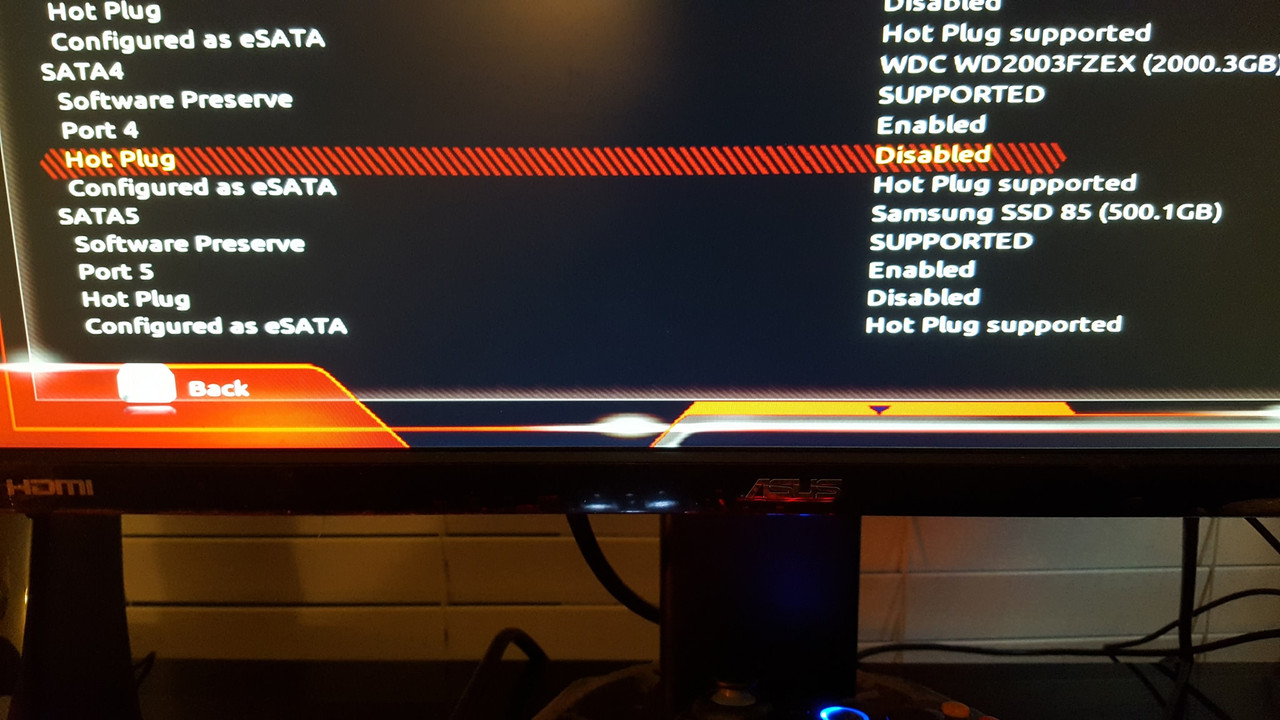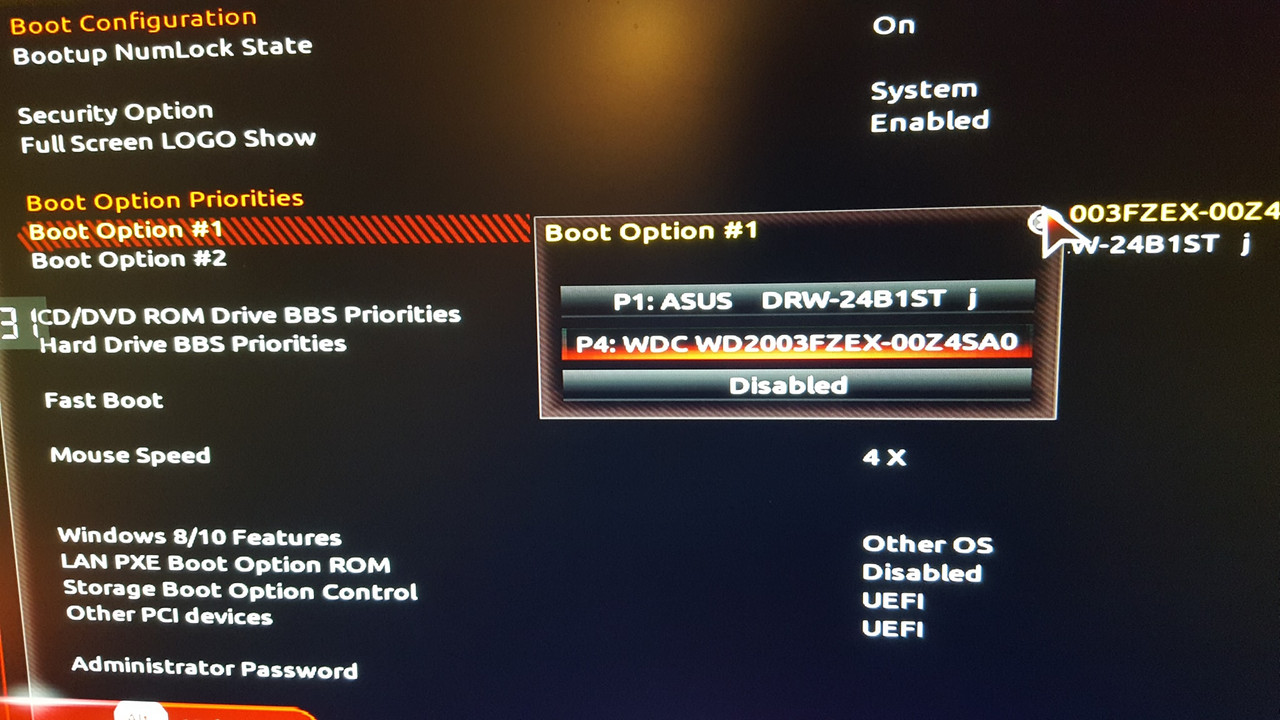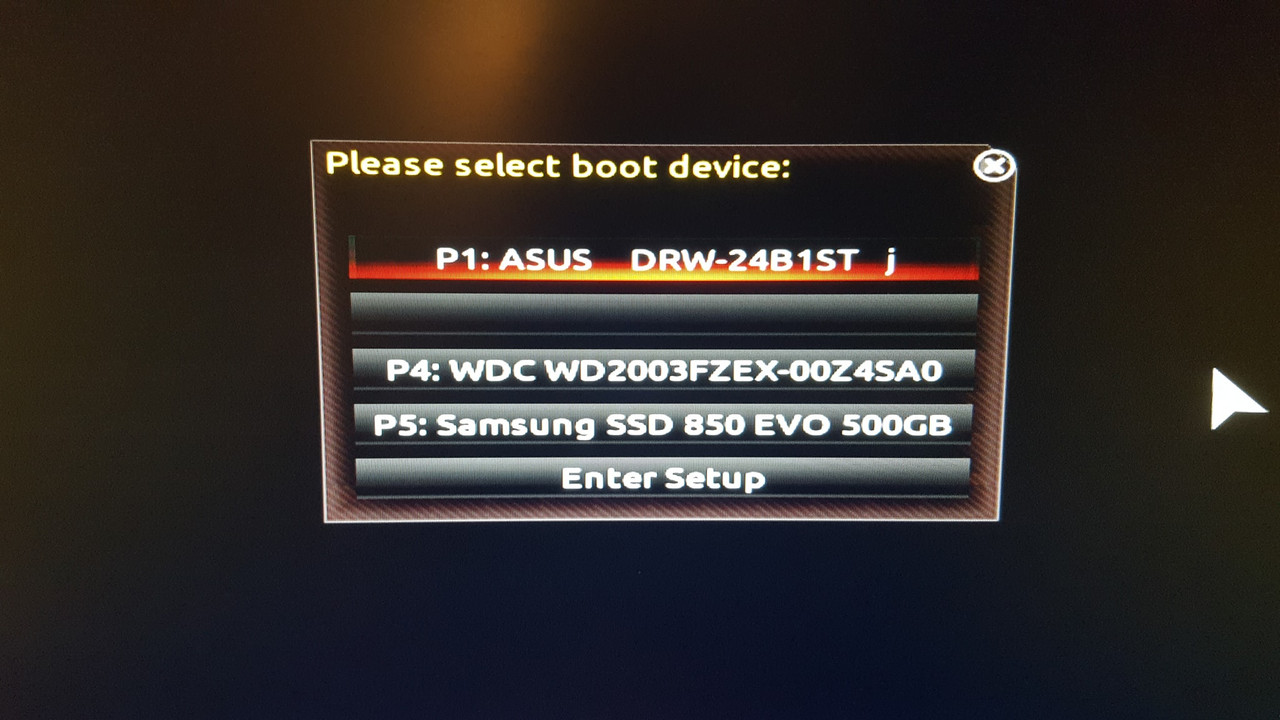EpicSurvivor
Member
BIOS Is not showing my Boot drive SSD but it does recognize the 2TB Storage HDD. When I check the SATA it shows that its Active and it shows the Samsung 850 EVO 500GB but its not showing in the BOOT option in BIOS.
I don't have a clue what to do. Everything works fine. Being using the Computer with no issues for 3 months now. No idea what I can do. I need to see my SSD IN BIOS for something I need to do.



I don't have a clue what to do. Everything works fine. Being using the Computer with no issues for 3 months now. No idea what I can do. I need to see my SSD IN BIOS for something I need to do.




